Prediabetes Foods to Eat: A Helpful Grocery List to Take With You

Key Takeways
What is prediabetes, and why does diet matter?
Did you know that roughly 38 percent of adults have prediabetes? This makes it nearly three times more common than diabetes! Simply put, it means that blood glucose levels are above the normal range but still below those that indicate diabetes.
Prediabetes is the first recognizable stage in the (potential) development of type 2 diabetes. Luckily, with certain lifestyle interventions, prediabetic blood glucose levels can be brought back down into a healthy range before diabetes ever fully develops.
So if you’ve been diagnosed with prediabetes, don’t despair! While this condition is no walk in the park, it at least offers a silver lining: a chance to address developing diabetes before it ever rears its head.
Building a Healthy Plate to Combat Prediabetes
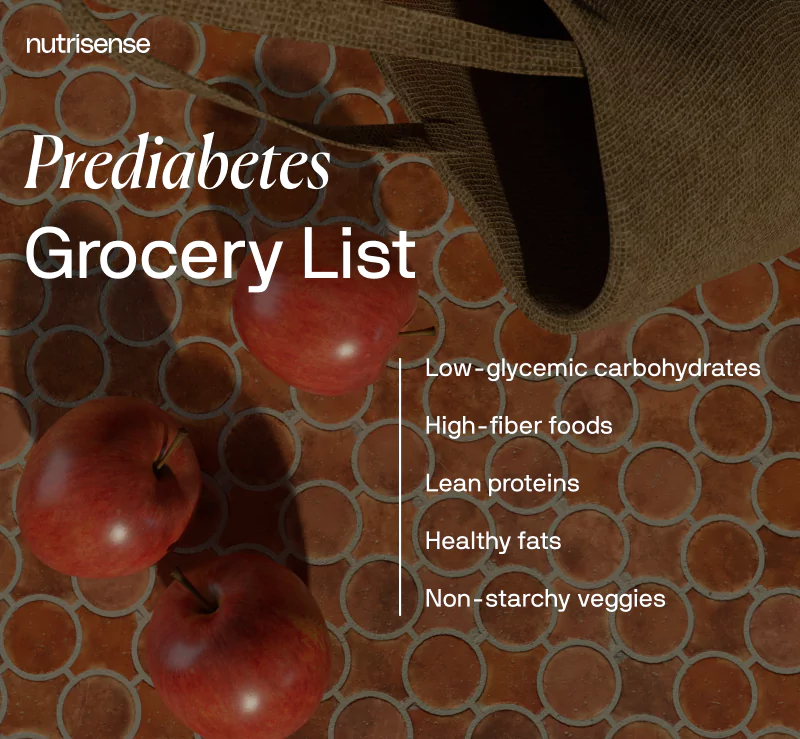
According to the World Health Organization, prediabetes and diabetes can lead to an increased risk of heart disease and other metabolic conditions. With healthy eating and good portion control, it may be possible to reverse prediabetes in some cases.
One of the most important things to target when addressing prediabetes is your diet. It’s important to know which foods to avoid and which to fill your plate with.
The obvious culprits (sugar-loaded snacks and soft drinks) are best left on the shelf, or at least consumed only on occasion in small amounts. But it’s not just the sweet stuff that can send glucose levels soaring: starchy foods and refined carbohydrates, like bagels, white bread, and white rice, can have as high a glycemic load as high-sugar foods.
That overwhelmed feeling in the grocery aisle
You’re standing in the middle of the grocery store at 5 p.m., trying to make sense of your new reality. The doctor’s diagnosis of prediabetes has turned your routine shopping trip into a series of confusing choices.
You know you need more fiber and less sugar, but the labels are overwhelming. You glance from the whole-grain bread to the quinoa, wondering which is actually better for you and if you'll even like it. You just want a clear, simple list that tells you what to grab so you can feel confident you’re making the right choices for your body.
Foods to include
So if we know what to avoid, what should we look for in a healthy diet? There are two main things to focus on when choosing foods for a prediabetic diet: protein and fiber.
Both of these nutrients have been shown to improve glycemic control. A diet rich in both protein and fiber can be beneficial in many ways, including:
- Keeping you feeling satiated for longer
- Increasing metabolic rate
- Potentially reducing the risk of metabolic conditions like heart disease
- Improving insulin sensitivity
In addition to protein and fiber, eating a diet with a high level of variety within food groups and adequate (not excessive) intake of vitamins and minerals is shown to have a significant positive impact on body weight. This can include colorful non-starchy veggies, various protein sources, some low-glycemic whole grains, and favoring whole foods over ultra-processed options.
Prediabetes grocery list: essential foods
To help you create a healthy meal plan for prediabetes, here’s a helpful grocery list broken down by food groups.
Low-Glycemic-Index (GI) carbohydrates
Here are some examples of low GI carbohydrates you might want to add to your cart. You can mix and match any of these foods based on your personal preferences.

- Whole grains like brown rice, quinoa, whole wheat, and steel-cut oats
- Legumes such as black beans and lentils
- Boiled winter squash, such as butternut squash
- Berries and other lower glycemic whole fruits
While many carbohydrates, especially refined carbohydrates, have a tendency to result in hyperglycemia when eaten on their own, not all foods rich in carbohydrates will cause blood glucose to spike. What is it about some carbohydrates, then, and not others, that accounts for this difference in response?
According to research, carbohydrate-rich foods with a high GI tend to have some combination of the following: high starch composition, low fiber, high sugar content, and low protein. By choosing carbohydrates with a low GI, you’ll be on your way to controlling your body’s glycemic response, potentially reducing the risk of developing type 2 diabetes.
However, the glycemic index doesn’t tell the full story. Glycemic load is often a more accurate way to account for glucose effects. Any low glycemic index carb can become a high glycemic index carb if you eat it in larger quantities! Amount matters, and glycemic load accounts for that factor.
High-Fiber foods
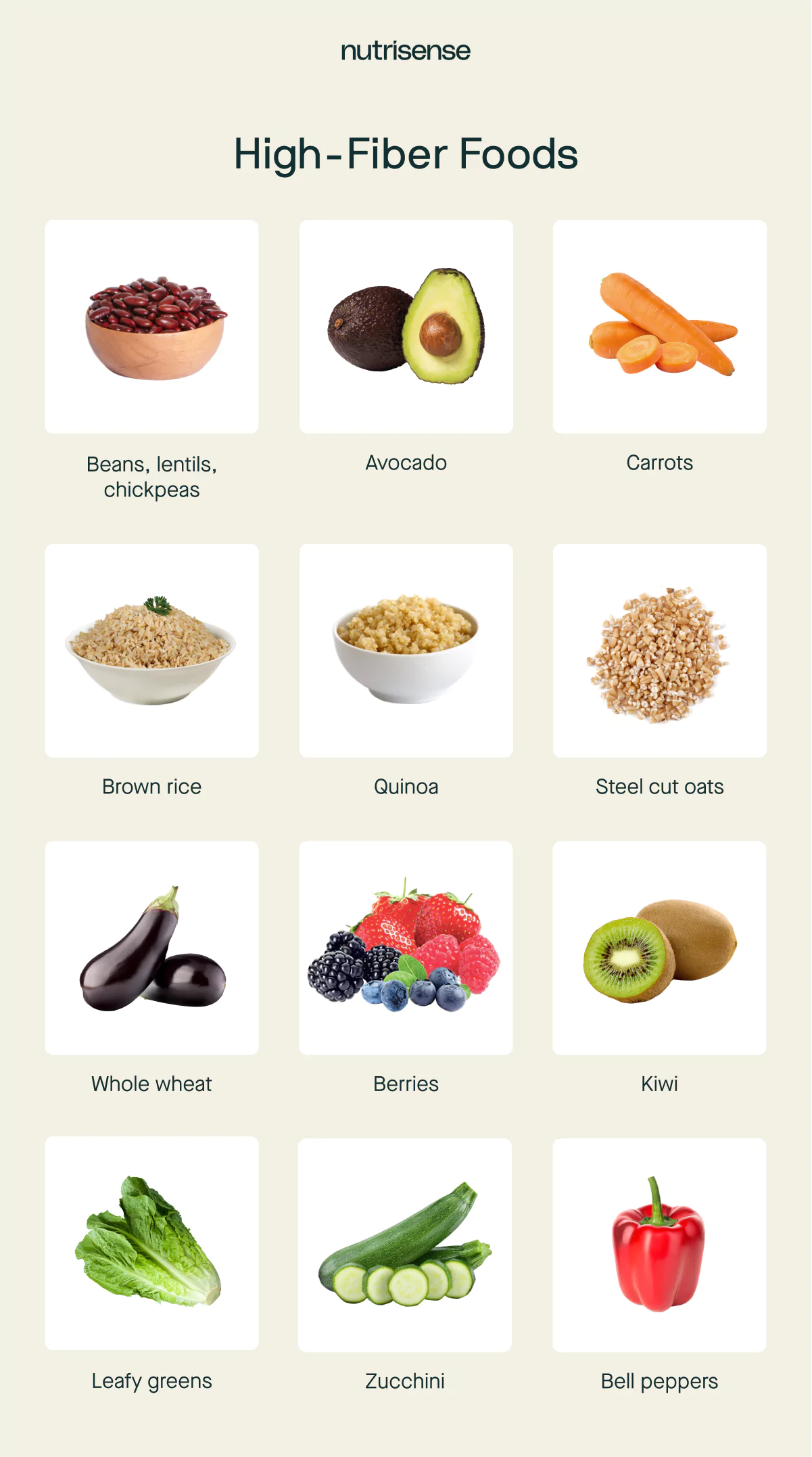
Dietary fiber is an invaluable tool for managing prediabetes. Here are some high-fiber foods that are great for any prediabetes meal:
- Beans, lentils, chickpeas
- Avocado
- Whole fruits such as kiwi and berries
- Whole grains such as brown rice, quinoa, steel-cut oats, and whole wheat
- Non-starchy veggies such as leafy greens, bell peppers, and zucchini
Increasing daily fiber intake toward a target of 25 grams per day for women and 38 grams for men can help to regulate postprandial glucose response, as well as to significantly reduce the risk of developing type 2 diabetes.
Lean proteins
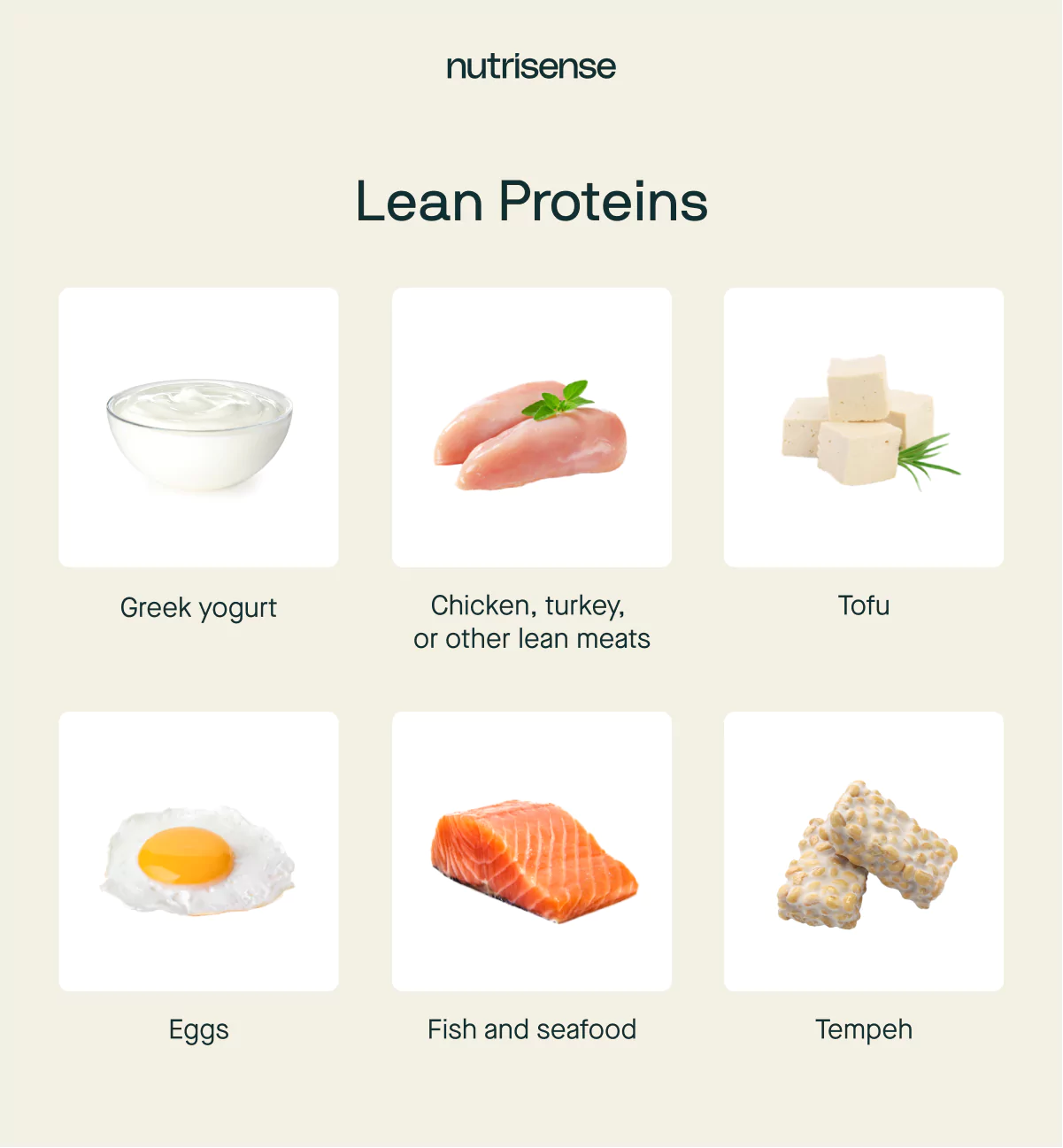
Here’s a selection of lean protein sources for your weekly shopping cart:
- Greek yogurt
- Chicken, turkey, or other lean meats
- Tofu and tempeh
- Eggs
- Fish and seafood of choice
Meeting your protein needs through a protein-rich diet may improve glucose control and reduce your risk of developing diabetes.
Not only that, but a diet high in lean protein may aid significantly in weight-loss—a definite plus when it comes to prediabetes, as being overweight is a risk factor for diabetes.
Healthy fats
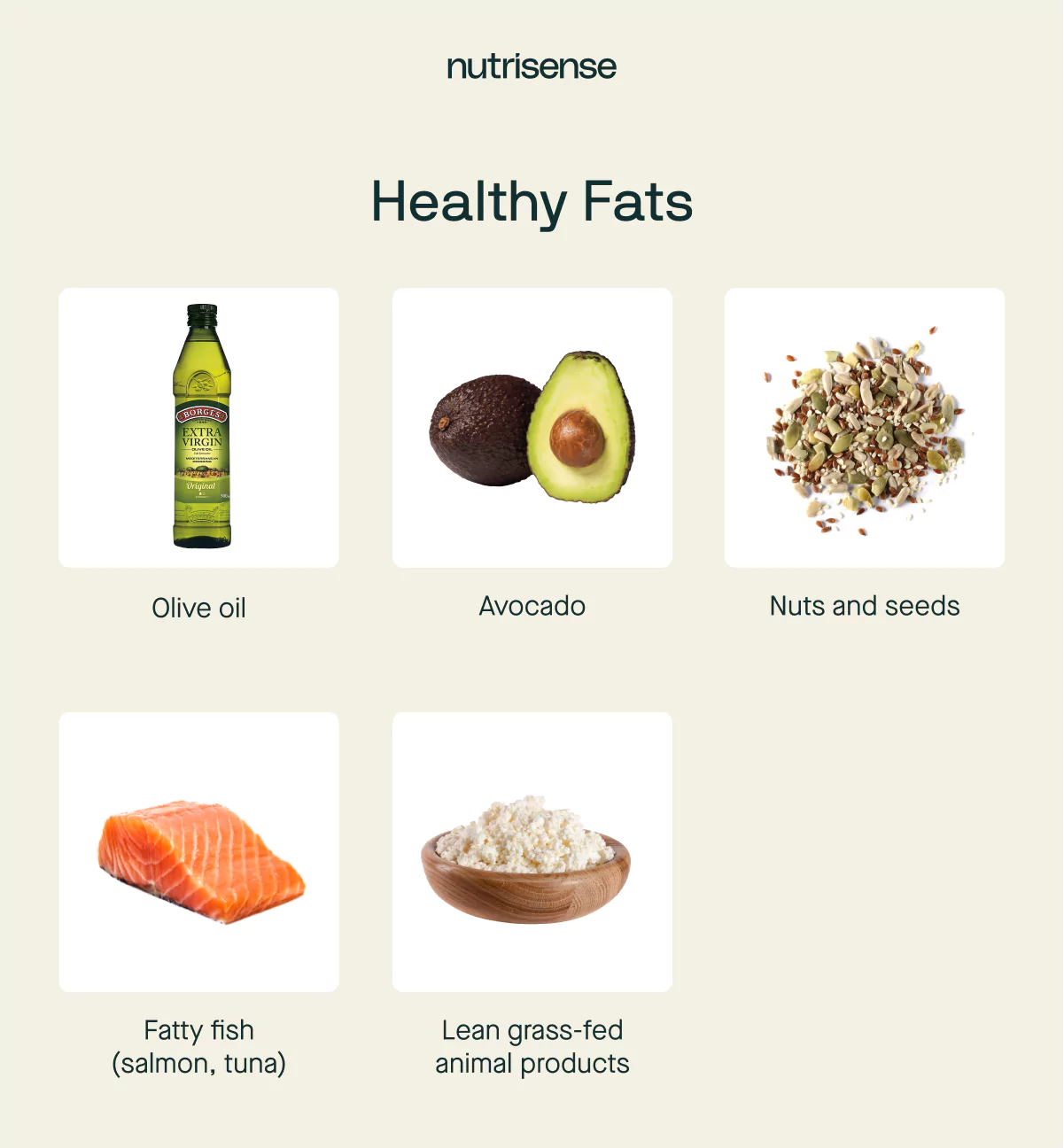
Here are some examples of healthy fats that are right at home on any prediabetes grocery list:
- Olive oil
- Avocado
- Nuts and seeds
- Fatty fish (salmon, tuna, etc.)
- Lean grass-fed animal products
Not all fats are created equal, and that’s especially true when it comes to glucose response. Including plenty of monounsaturated and certain types of polyunsaturated fats, such as omega-3 fats, can lead to significant improvements in insulin sensitivity and a reduced risk of developing diabetes.
Grass-fed animal products may also contain higher levels of conjugated linoleic acid (CLA), which may have heart-healthy benefits and has potential anti-obesity effects in animal model studies.
Non-starchy vegetables
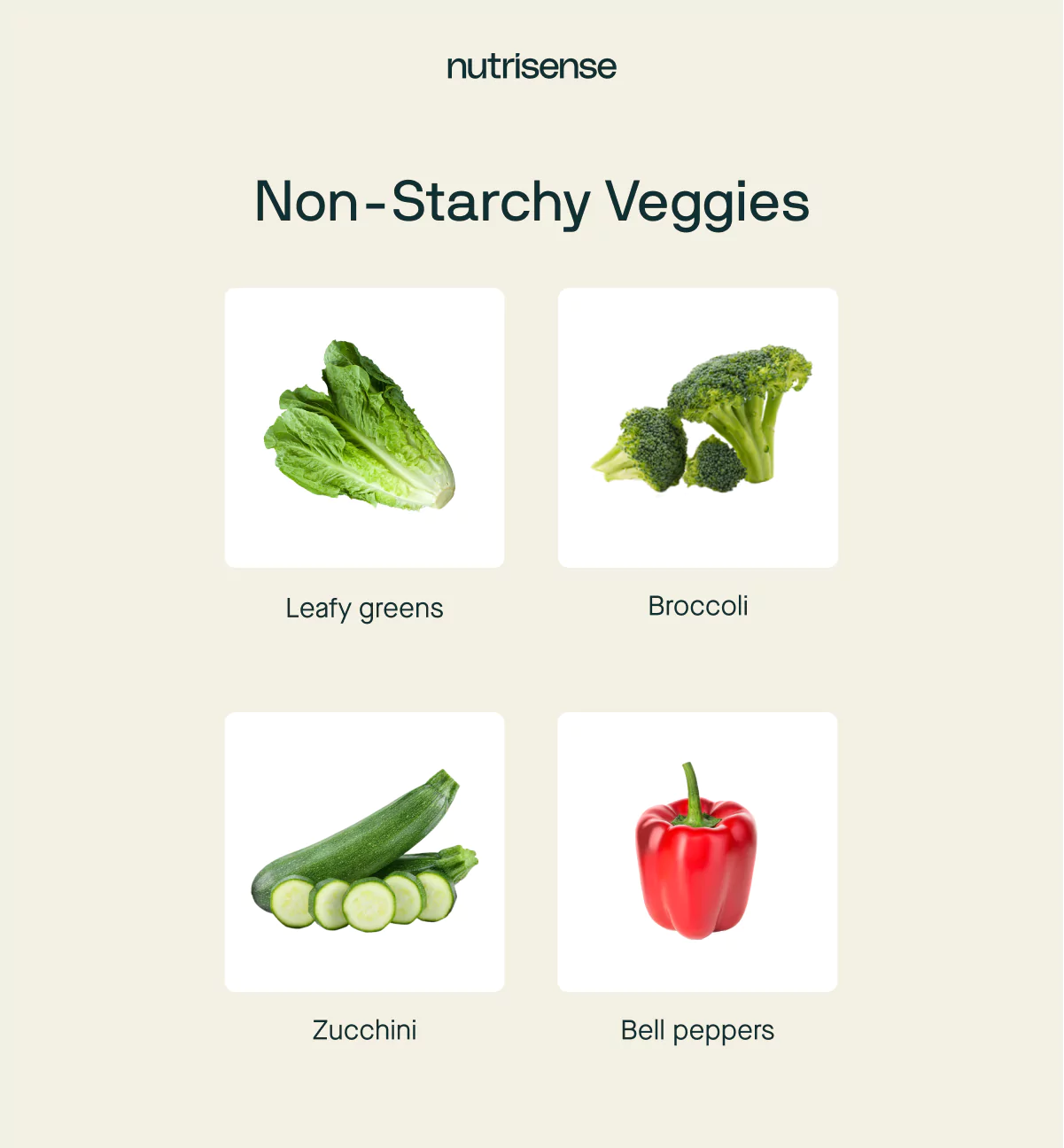
Here are some great non-starchy veggies for your shopping list:
- Leafy greens
- Broccoli
- Zucchini or yellow squash
- Bell peppers
It wouldn’t be fair to say that all starchy foods are bad for prediabetic and diabetic individuals. However, many starchy foods, especially those with rapidly digestible starches, can cause rapid elevations in blood glucose.
Vegetables such as those listed above are not only great sources of fiber but also of important nutrients, including A, C, K, magnesium, potassium, and folate. Not to mention, they may also help to reduce cholesterol.
Other smart snacking options
Managing prediabetes doesn’t have to be a drag—there are plenty of delicious options for healthy snacking. Given the central role of diet in managing the condition, it’s important to avoid foods that spike your blood glucose while choosing those that support glucose regulation.
Just because a meal is low in carbs and sugar and high in fiber and protein doesn’t mean it has to be bland! Here are some delicious, nutritious snack ideas suitable for prediabetes that can be made with items from this shopping list.
- Greek yogurt bowl with nuts and berries
- Hard-boiled eggs with salt and pepper
- Turkey, avocado, bell pepper, and cheese roll-ups
- Blanched edamame beans
- A small sliced apple with peanut butter
Find the right Nutrisense programto turn insight into progress.
Make eating for prediabetes simpler with Nutrisense
Make eating for prediabetes simpler with Nutrisense
Shopping Tips for Prediabetes
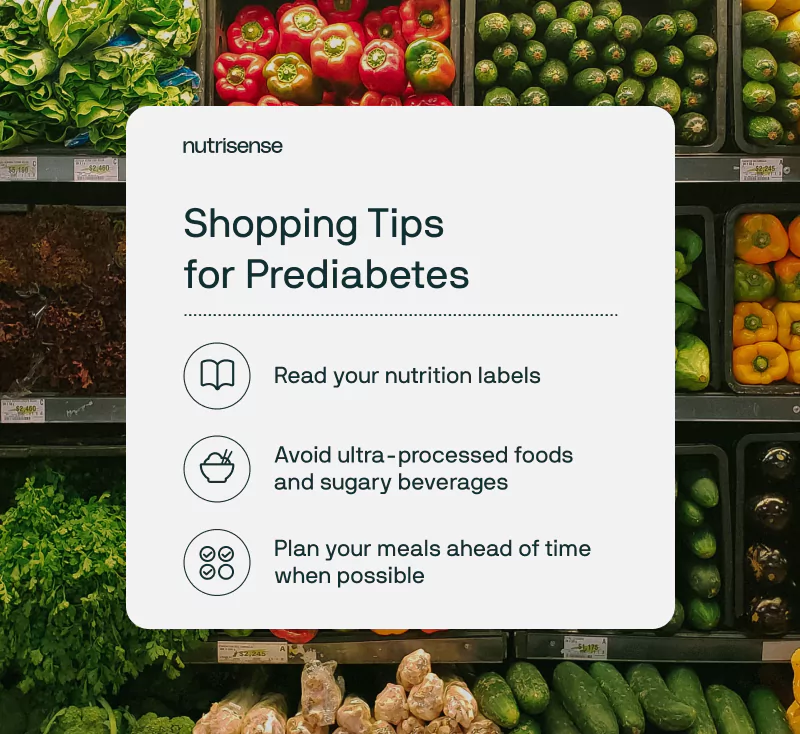
Smart shopping makes healthy eating simpler. Use labels to match portions to your plan, favor minimally processed foods, and stock staples that help steady glucose. Here’s how to build a cart that supports your goals.
1) Reading food labels for informed choices
Food labels can be deceiving. Sure, a particular food may seem to have reasonable nutritional content—but if the listed portion size is one-tenth of what would actually satiate you, is it really that healthy, after all?
When reading nutrition labels, be sure to also consider the portion size and compare it to your intended portion size. Look out for any hidden ingredients and added sugars as well.
2) Avoiding ultra-processed foods and sugary beverages
From added sugars to high sodium and trans fats (not to mention additives), highly processed foods can be lacking in their nutritional profile. They are also associated with a number of potential adverse health outcomes, from obesity and diabetes to cardiovascular disease.
While they may taste good, such sugary drinks are often loaded with added sugar, which may elevate glucose and increase the risk for type 2 diabetes.
3) Planning meals and creating a grocery list

Knowing which foods fit into your prediabetes diet plan in advance can keep you focused and ensure that when it's time to prepare a meal, you’ll have everything you need. By putting together an informed grocery list beforehand using the foods listed above, a quick trip to the grocery store will leave you with everything you need to get your glucose response back on track.
4) Working with a registered dietitian or nutritionist
Having someone guide you through the noise (what to eat more of, what to eat less of, what actually works for you) can make all the difference. That’s where a highly qualified nutritionist, such as a registered dietitian from Nutrisense, can help turn confusion into clarity.
Meal Prepping for Prediabetes
Any diet can benefit from a little planning, and that’s especially true when it comes to specific dietary needs. The key to a successful diet is consistency, and it’s far easier to stay on track when you’ve already done the work.
Consider batch-cooking some tasty, nutritious meals to keep you going throughout the week with minimal effort. Even if it’s just a couple of days in advance, having meals already prepared makes it that much more likely you’ll stick to the plan and not settle for fast food out of convenience.
Additional Tips to Address Prediabetes

Nutrition is a huge piece of the puzzle when it comes to prediabetes. But it’s not the only thing you can do to help get your glucose response back to ideal levels.
Regular moderate-intensity physical activity may significantly improve glucose control and help prevent the development of diabetes. Beyond that, appropriate types and amounts of exercise for your individual tolerance and needs may also help to reduce stress, which happens to be another risk factor in prediabetes.
Prediabetes doesn’t have to mean diabetes. With these few simple lifestyle changes, paired with regular monitoring and communication with your healthcare professional, your glucose response can be back to normal before you know it.
Prediabetes Grocery List FAQ
Q1. How can I adapt this prediabetes grocery list for a vegetarian diet?
A1. Focus on plant proteins and fiber. Build meals with legumes, tofu or tempeh, eggs, Greek yogurt, and high-fiber grains like quinoa or steel-cut oats. Fill half your plate with non-starchy vegetables and add healthy fats such as olive oil, avocado, nuts, or seeds. For snacks, try edamame, yogurt with berries, or hummus with bell peppers.
Source: Prediabetes Foods to Eat: A Helpful Grocery List to Take With You
Q2. What are smart restaurant swaps that align with this list?
A2. Choose grilled or baked protein over breaded or fried options. Swap fries or rice for extra non-starchy vegetables or a side salad. Ask for sauces and dressings on the side. Consider ordering half portions or sharing an entrée. Add sparkling water or unsweetened tea. If you order starch, pair it with protein and fiber, and keep portions moderate.
Source: Prediabetes Diet Plan
Q3. How can I use Nutrisense with this list to personalize my choices?
A3. Use a continuous glucose monitor with the Nutrisense app to view glucose trends. Log meals, portions, and activity alongside your data. Test one change at a time, like adding protein to breakfast or shrinking a rice serving, and watch the pattern over several days. Book a session with a Nutrisense dietitian to fine-tune your list and routine.
Source: What is a CGM? Benefits for Prediabetes
Q4. Do I need to avoid starchy vegetables like potatoes or squash?
A4. They can fit with portion awareness and balance. Favor options listed in the guide, like boiled winter squash. Pair starches with protein, healthy fats, and plenty of non-starchy vegetables. Since glycemic load rises with quantity, start with smaller servings and see how you feel, then adjust based on your goals.
Source: Prediabetes Foods to Eat: A Helpful Grocery List to Take With You
Q5. Are frozen or canned items OK for this list?
A5. Yes. Frozen vegetables and fruits without added sugars or sauces are convenient standbys. For canned goods, opt for beans, lentils, fish, or tomatoes with minimal added sugar and lower sodium content. Rinse canned beans to reduce sodium. Check labels for added sugars in sauces and drinks, and keep portions in line with your plan.
Source: Foods With Hidden Sugar
Find the Perfect Prediabetes Diet with Nutrisense
Your grocery list can be a powerful health tool when you know how your body responds to different foods. With Nutrisense, you’ll see how different meals impact your glucose, energy, and cravings in real time, and learn how to build balance that lasts.
One-to-one coaching
Sign up to access insurance-covered video calls with a glucose expert: a personal registered dietitian or certified nutritionist who will help tailor your lifestyle and diet to your goals.
Turn trends into daily moves
With the Nutrisense Program, you can monitor your glucose with health tech like glucose biosensors and continuous glucose monitors (CGMs), and analyze the trends over time with the Nutrisense App. This will help you make the most informed choices about the foods you consume and their impact on your health.
Take the first step
Start with our quiz to find the right Nutrisense program to help you take control.
Go Beyond Glucose Data with Nutrisense
Your glucose can significantly impact how your body feels and functions. That’s why stable levels are an important factor in supporting overall wellbeing. But viewing glucose isn't enough. Nutrisense, you’ll be able to learn how to use your body's data to make informed lifestyle choices that support healthy living.
One-to-one coaching
Sign up to access insurance-covered video calls to work with a glucose expert: a personal registered dietitian or certified nutritionist who will help tailor your lifestyle and diet to your goals.
Monitor and measure what matters
With the Nutrisense CGM Program, you can monitor your glucose with health tech like glucose biosensors and continuous glucose monitor (CGM)s, and analyze the trends over time with the Nutrisense App. This will help you make the most informed choices about the foods you consume and their impact on your health.
Find your best fit
Ready to take the first step? Start with our quiz to find the right Nutrisense program to help you take control.

Kara Collier is a registered dietitian nutritionist and certified nutrition support clinician who is passionate about reshaping how we approach prevention, behavior change, and metabolic health. A Forbes 30 Under 30 honoree, she’s helped over 150,000 people improve their metabolic health using tools like continuous glucose monitors and behavior-focused nutrition strategies. Kara has been featured by Forbes, UC Berkeley, and HLTH, and has appeared on top podcasts like Mind Pump and The Genius Life.




.webp)